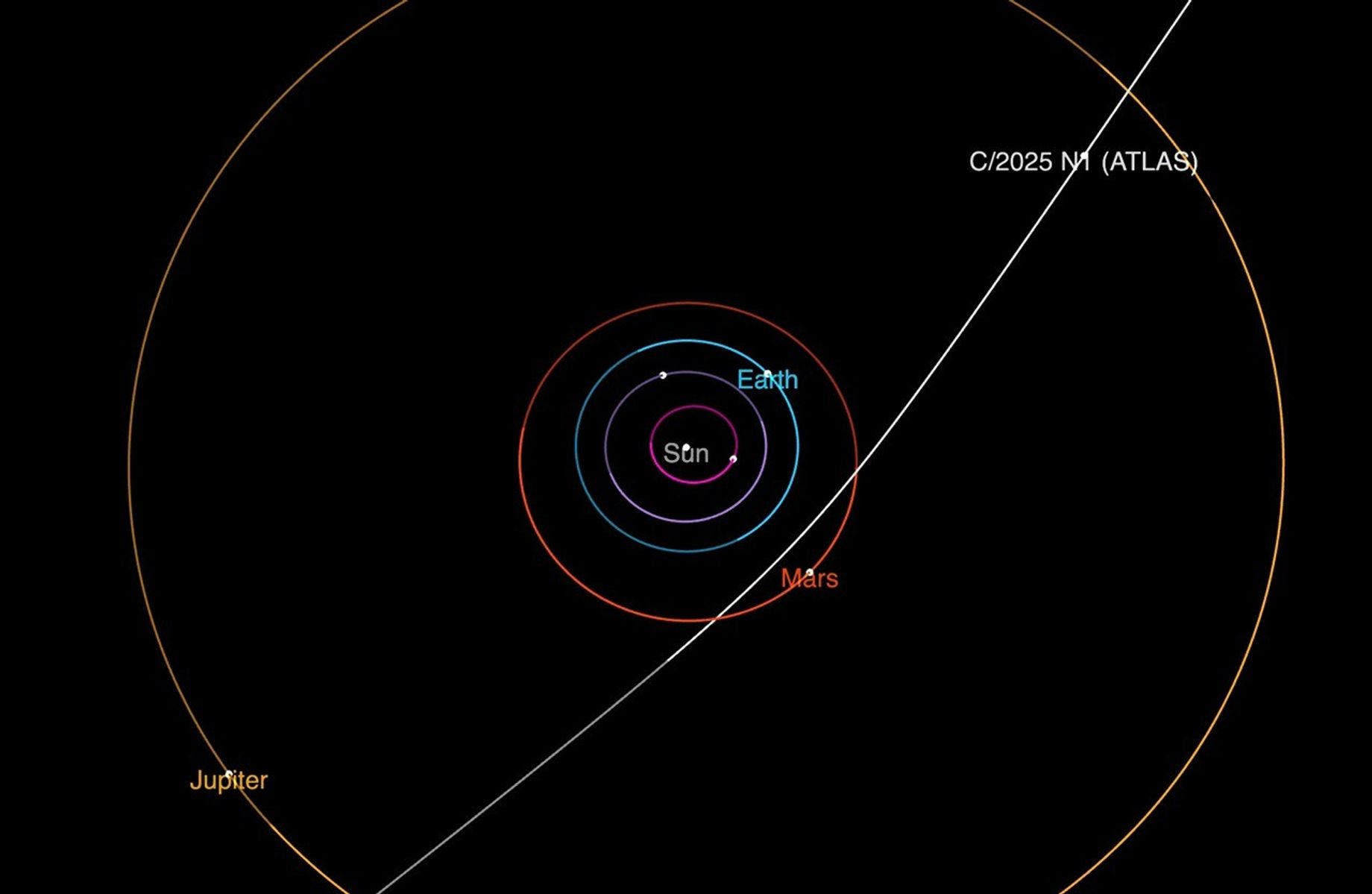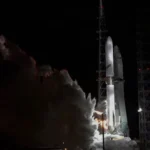A rare cosmic traveler from beyond our solar system is currently speeding through our cosmic neighborhood. Named 3I/ATLAS (also known as C/2025 N1), this comet is only the third confirmed interstellar object ever detected, following ‘Oumuamua in 2017 and Comet 2I/Borisov in 2019.
The NASA-funded Asteroid Terrestrial-impact Last Alert System (ATLAS) survey telescope in Chile first spotted this visitor on July 1, 2025. Follow-up observations by telescopes worldwide quickly confirmed its unusual path, which clearly shows it didn’t originate in our solar system.
“This thing is traveling pretty fast,” said Paul Chodas, director of the Center for Near Earth Object Studies at NASA’s Jet Propulsion Laboratory. The comet is currently moving at about 130,000 miles per hour (60 kilometers per second) relative to the Sun and will continue to accelerate as our star’s gravity pulls on it.
What makes 3I/ATLAS special is both its speed and size. Scientists estimate it could be between 10 and 20 kilometers (6-12 miles) in diameter, potentially making it the largest interstellar object yet discovered. The comet is moving “considerably faster than the other two extrasolar objects that we previously discovered,” noted Mark Norris, an astronomer at the University of Central Lancashire.
The comet’s path follows what scientists call a “hyperbolic trajectory” – a curved path so extreme it defies the Sun’s gravitational pull, confirming it came from outside our solar system. If you traced its orbit backward, it seems to come roughly from the direction of the center of our galaxy, though astronomers don’t know which specific star system it originated from.
“It will fly deep through the Solar System, passing just inside the orbit of Mars,” explained Richard Moissl, head of planetary defense at the European Space Agency. The comet will make its closest approach to the Sun (called perihelion) around October 30, 2025, at a distance of about 1.4 astronomical units (AU) – just inside Mars’ orbit. Importantly, Earth will be on the opposite side of the Sun during this time, so there is absolutely no threat to our planet.
Similar Posts
Unlike the mysterious ‘Oumuamua, which showed no visible comet-like features, 3I/ATLAS appears “fuzzy” with “some gas around it” and a “very short tail,” according to Peter Veres, an astronomer with the International Astronomical Union’s Minor Planet Center. This clearly identifies it as a comet – essentially a cosmic snowball of ice and dust.
Currently, 3I/ATLAS is only visible using large telescopes, primarily from the Southern Hemisphere. However, it’s expected to brighten to magnitude 16 by August 2025, making it potentially observable with advanced amateur telescopes. Astronomers anticipate it will remain visible with powerful telescopes into next year as it recedes from the Sun.
The discovery of this third interstellar visitor reinforces the growing understanding that such objects might be much more common than previously thought. Mark Norris stated that computer modeling suggests “there could be as many as 10,000 interstellar objects drifting through the Solar System at any given time, though most would be smaller” and harder to detect.

This finding comes at an exciting time for astronomy. The upcoming Vera C. Rubin Observatory in Chile, which is exceptionally good at spotting moving objects, could revolutionize our ability to find these visitors. Once fully operational, it “could soon be finding these dim interstellar visitors every month,” according to Norris, potentially opening a new chapter in our understanding of objects from beyond our solar system.
Scientists will continue studying 3I/ATLAS throughout its journey, hoping to learn more about its composition, which could provide valuable insights into the material that exists in other star systems. Like other high-speed objects in our solar system, this comet detected by ATLAS gives astronomers a rare opportunity to study materials from beyond our cosmic neighborhood.


















